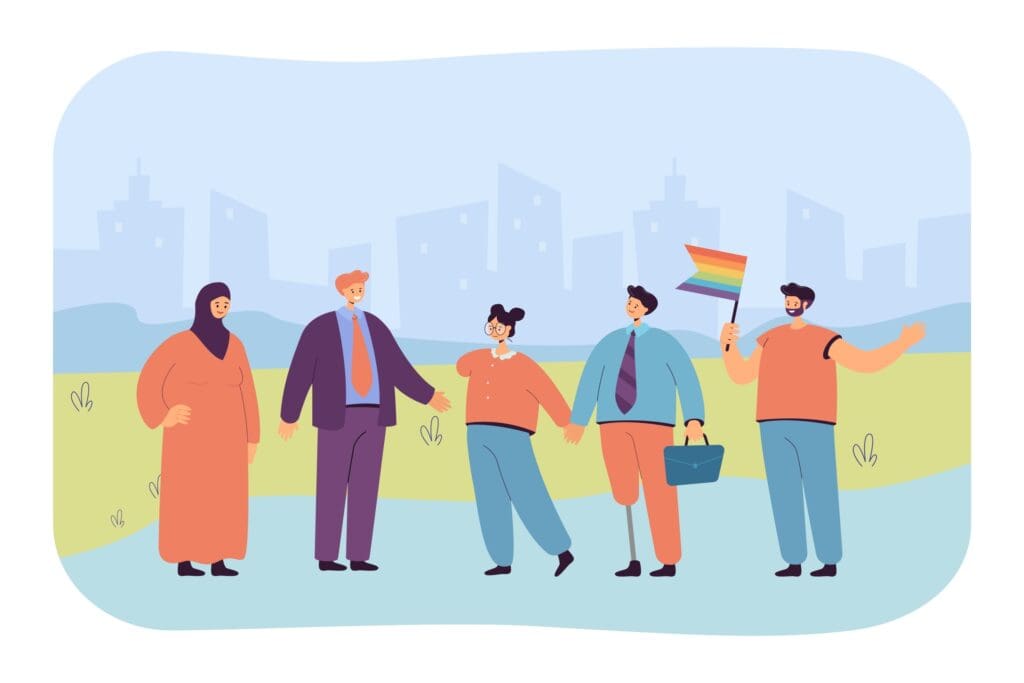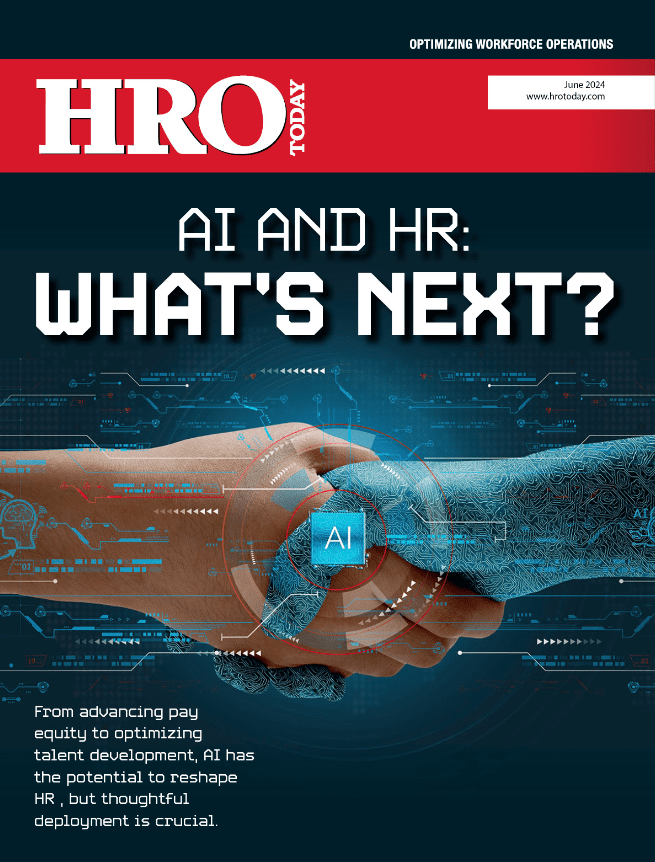With AI poised to reshape the workforce, here’s how HR leaders can address some of its biggest challenges.
By Maggie Mancini
Nearly two years after ChatGPT was released to the public, artificial intelligence (AI) remains a major influence on the world of HR. From helping augment the talent acquisition process to taking the reins of data analytics, AI has the potential to reshape the global workforce. At the same time, the AI revolution has not been without its challenges. With many employees concerned about the risk of job displacement due to automation, HR leaders are tasked with preparing their organizations for the next phase of technological change. Further, leaders must continually monitor and remove biases in AI and machine learning algorithms to ensure that AI can be a force for good.
Reskilling for Retention
A prominent fear associated with the rapid implementation of AI technology in the workplace is the potential for job displacement. With research indicating that as many as one quarter of jobs could be replaced with AI within the next few years, HR leaders must balance business demands with the concerns of their employees—particularly among knowledge workers.
One of the big ways for HR leaders to improve trust among employees is by listening and acting on feedback from the workforce, says Jesse Harriott, executive director of Workhuman iQ, adding that it’s critically important to make sure leaders hear what employees are thinking and work to fully understand their concerns.
For employees anxious about diminished earning potential or being replaced by AI, upskilling and reskilling opportunities can help them remain competitive in the talent marketplace, while AI ethics trainings and company-wide adoption of the technology can help support the transition while identifying places where AI can augment daily tasks.
During a discussion on reskilling in the age of AI during Workhuman Live 2024, Raffaella Sadun, professor of business administration at Harvard Business School, explains that every time there’s a technological evolution, there’s a change in productivity that leads to changes in the demand for certain skills and the creation of new occupations. In that way, she explains, reskilling is one possible answer to the question of job displacement due to AI.
While AI is already substituting tasks, including cognitive ones, AI-related skills are increasingly sought after, new roles have emerged, and employees who are able to take new, data-driven approaches to decision-making within organizational structures will be more valuable in the workforce, she says.
To address the disruptions in the global workforce, organizations are increasingly investing in reskilling programs to help retain workers as the demand for skills continues to advance at a rapid pace. Sadun’s research with the Data Digital Design Institute at Harvard’s Digital Reskilling Lab identifies five paradigm shifts that are emerging in reskilling.
- Reskilling is a strategic imperative. While reskilling has traditionally been used to help avoid layoffs, the combination of rapid AI implementation and an aging workforce has made reskilling a strategic priority for organizations looking to remain competitive and stay ahead of the demand for skills, Sadun explains.
- It is the responsibility of every leader and manager. Though reskilling is typically understood as an HR responsibility, senior leaders and managers are increasingly spearheading reskilling initiatives and identifying critical skills needed for operational success.
- Reskilling is a change management initiative. Rather than focusing exclusively on training employees, reskilling initiatives require leaders to take an inventory of their organization’s critical skills, identify employees who may be best suited for reskilling, provide on-the-job training whenever possible, and then reintegrate them within the company, according to Sadun’s research.
- Employees want to reskill—when it makes sense. The research finds that, for many leaders, convincing employees to opt in to reskilling is a major challenge. Yet, as employees grapple with concerns about job displacement due to AI, they are more open to reskilling. By designing reskilling programs to suit employee needs, workers are more likely to participate.
- It takes a village. Rather than focusing entirely on internal talent development when building a reskilling program, organizations can utilize the surrounding community and its resources—including local universities and nonprofit organizations—to support reskilling efforts.
By prioritizing the upskilling and reskilling of employees, listening to their feedback about AI, and bringing the workforce along for each step of the company’s AI integration, HR leaders can address concerns and help bring the organization into the future.
Addressing Unconscious Bias
The growing use of AI in the workplace also has people questioning the extent to which human bias has influenced the development of machine algorithms. While AI has the potential to reduce the impacts of biased human decision-making, the design and development of AI algorithms can also perpetuate unconscious biases that, if left unchecked, could have far-reaching implications for employees, leaders, and organizations.
While some organizations may seek to identify and eliminate all forms of bias within their AI algorithms, it may not be that easy. For example, Google’s rollout of its Gemini AI tool was halted after users reported that the program was generating inaccurate historical images. The company paused the program’s ability to generate images after receiving backlash, stating that the algorithm was trained to include diversity in its results but that it was “missing the mark” in its depiction of historical images.
“Bias is going to be in every AI system, so it’s important that you address it from multiple angles,” Harriott says. “The first way you address it is by addressing what data is feeding that system. If you’re training your models based on everything that’s on the internet, we all know some of the horrific things on the internet. And when we’re starting with that human connection data, there’s certainly still bias in there that needs to be removed systematically through monitoring the models and making sure we’re measuring how recognition is being received equitably.”
Harriott explains that Workhuman iQ created the “Inclusion Advisor,” which provides in-the-moment bias detection. As users are typing a recognition message, there is an AI-trained model that will check the writing and ensure that the user is not saying something unintentionally offensive or condescending.
With humans included as part of the process, Harriott says, the goal should be to remove the bias from the human interactions that build the AI algorithm and ultimately make those models better, rather than relying on fake, created data, or data randomly scraped from the internet. Humans are vital to the successful integration of AI technology in the workplace, and understanding where biased algorithms originate is important in reducing their impact on organizations.
As automation technology continues to gain steam among organizations in the U.S. and abroad, it’s clear that AI is here to stay. Though the technology will likely cause a shift in productivity and the way people work, freeing up time for employees to focus on strategic tasks, it may also displace jobs that were historically understood as future-proof. And even as AI has the potential to reduce biased decision-making in the workplace, it can preserve and perpetuate unconscious biases if not deployed responsibly.
By incorporating human decision-makers, critical thinkers, and innovators, organizations can help reduce the impact of the challenges brought by AI.
















